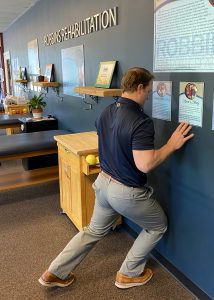During a physical therapy examination, your therapist will perform tests to rule in or rule out causes of your pain, no matter what body part is bothering you. There are dozens of foot and ankle special tests, but here are a few that you can perform on yourself at home.
Weight-bearing lunge dorsiflexion test
To perform this test, find a wall and kneel close to it with your shoes off. Use a tape measure and place your big toe 5 inches from the wall. From this position, push your knee forward attempting to touch the wall with your knee. Your heel must stay in contact with the ground and the knee should not collapse inward.
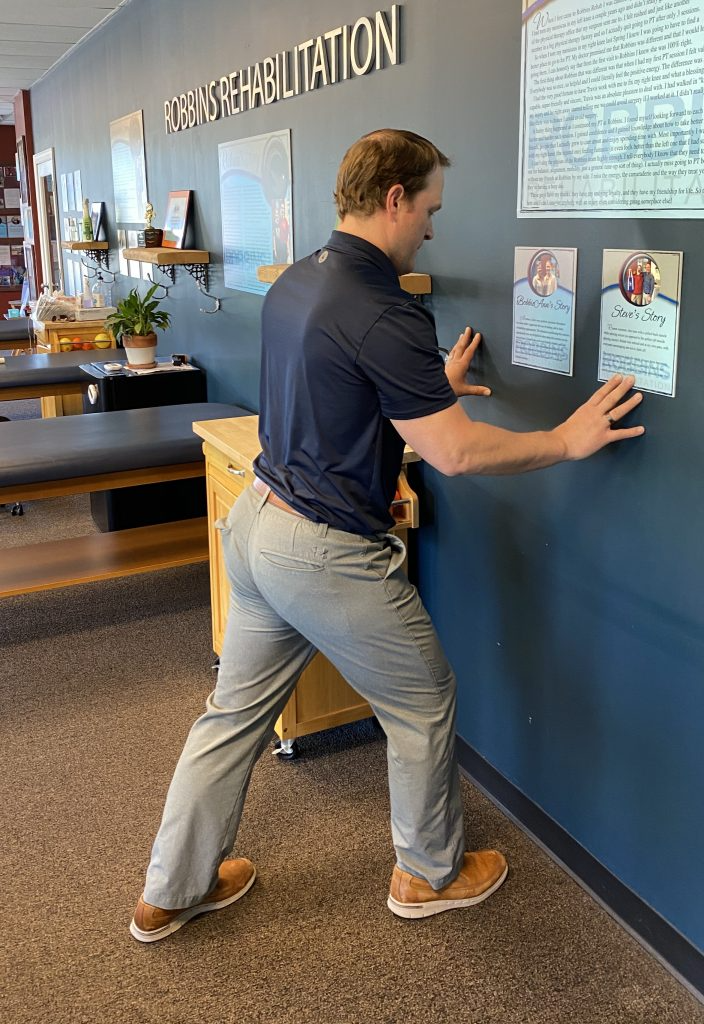
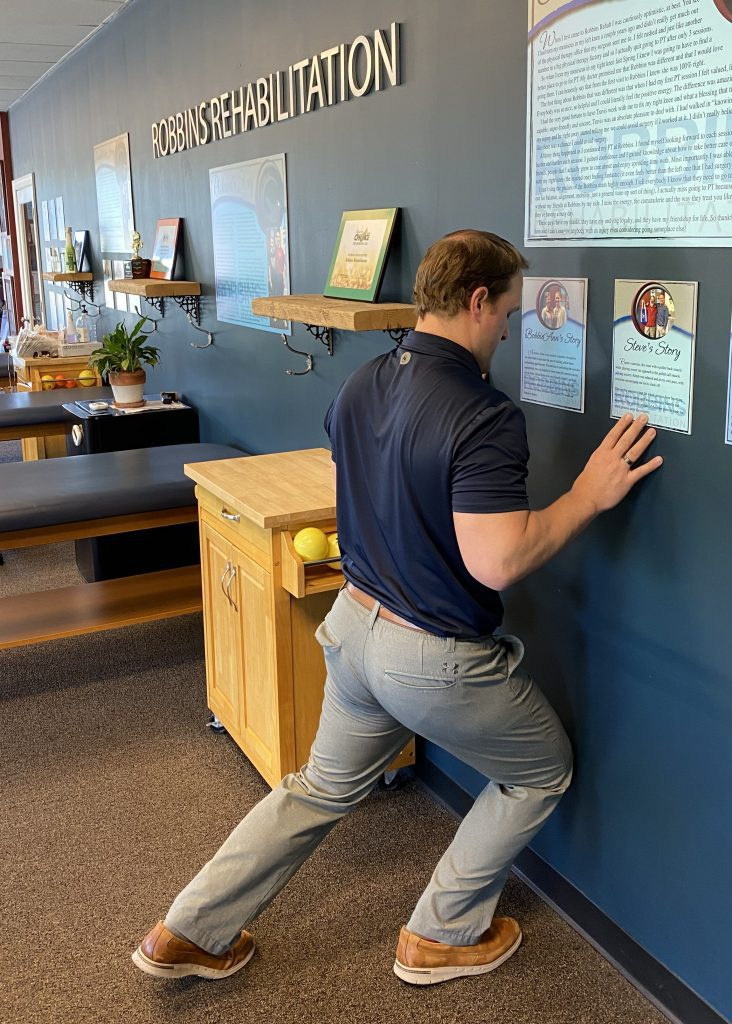
Positive test: Unable to get knee to wall without heel rising or pain present
What does a positive test mean?
A positive test indicates a lack of adequate ankle dorsiflexion mobility which can contribute to pain and altered movement patterns during activities such as squatting, running, and lunging. Performing these activities with stiff ankles will mean there are compensations occurring somewhere else in the body to accomplish the task.
Single leg heel raise test
To perform this test, stand facing a wall or sturdy object. You may touch lightly for balance but should not use your hands to assist in the movement. Lift one foot off the ground and perform a heel raise with the planted leg as high as you can lift then lower back down in control. Stop once you reach 25 repetitions, experience pain, or have a significant decrease in heel height, then switch legs and repeat the test.


Positive Test: Unable to achieve 25 repetitions without pain or a significant decrease in height.
What does a positive test mean?
Inability to complete 25 repetitions indicates a lack of strength and endurance in the calf muscles. Adequate strength of these muscles is important to allow for optimal walking, running, and jumping activity. Since the calf muscles tie into the plantar fascia it is also important for reducing the stress placed through these tissues with increased activity.
Single leg balance
To perform this test, stand near a wall or sturdy object in case you must catch yourself. When ready, place your arms across your chest, focus your eyes on a spot on the wall in front of you, and raise one leg off the ground. Maintain your balance as long as possible up to 45 seconds without uncrossing your arms, shifting the stance leg, or moving the raised leg excessively. Repeat the test with eyes closed as well, this will be significantly more difficult. Take the best of 3 attempts as your final score.
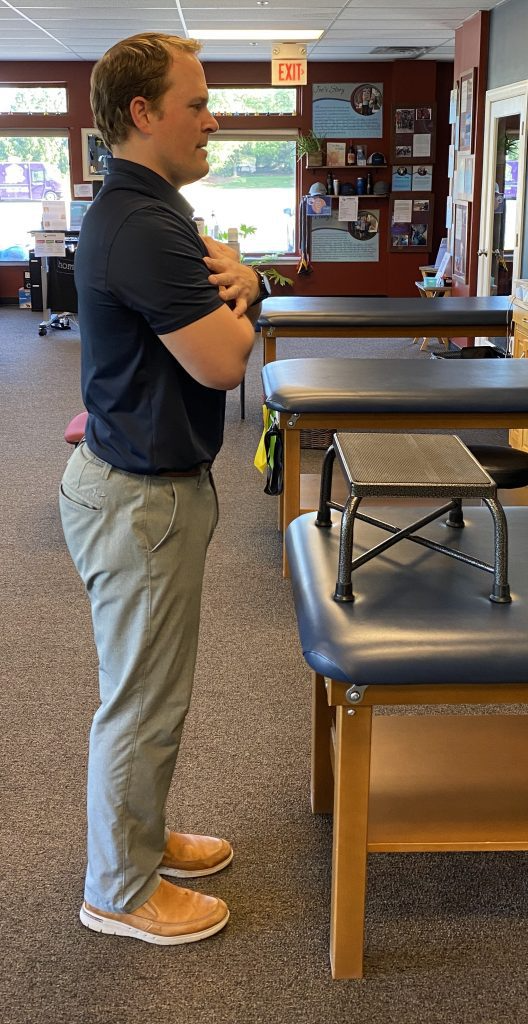
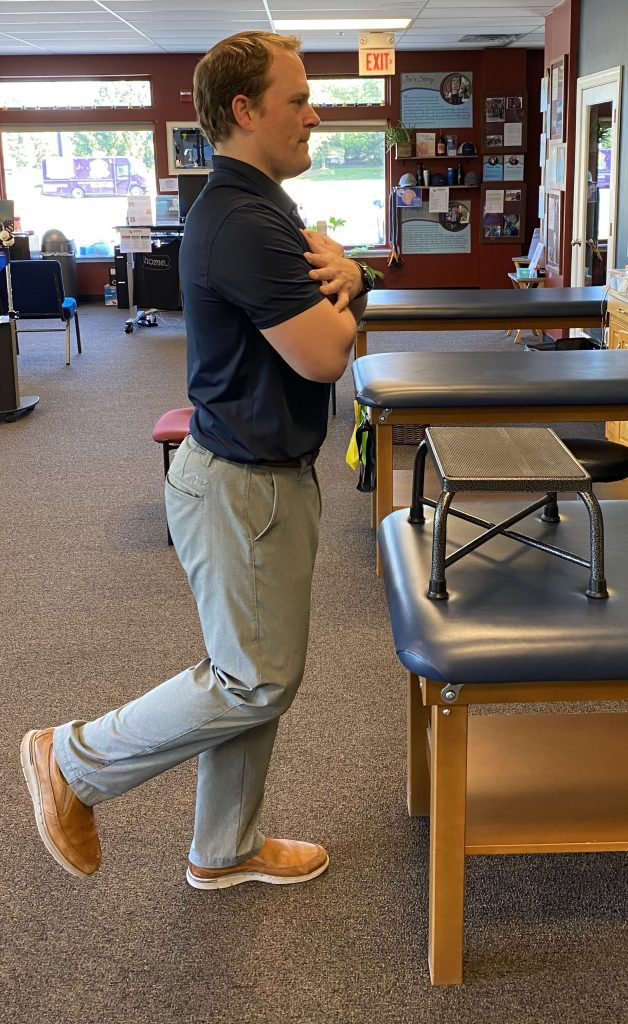
Below are the age based norms for balance with eyes open and eyes closed:
| 18-49 | 50-59 | 60-69 | 70-79 | 80-99 | |
| Eyes Open | 40 sec | 37 sec | 27 sec | 15 sec | 6 sec |
| Eyes Closed | 7 sec | 5 sec | 3 sec | 2 sec | 1 sec |
Negative test: Able to maintain balance with eyes open without uncrossing arms from chest or shifting stance foot.
Positive test: Unable to maintain balance without uncrossing arms or excessive stance or raised leg movements.
What does a positive test mean?
A positive test indicates a lack of balance which could be caused by muscle weakness, lack of proprioception(awareness of body within space), or vestibular issues. Poor balance increases risk of falls and can indicate deficits in lower limb and foot muscle activation.


